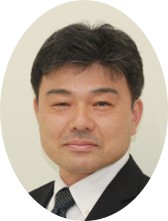Plenary Talk
Presenter:
Prof. Hisashi Morishita
Department of Electrical and Electronic Engineering,
National Defense Academy

Title:
An innovative decoupling method for MIMO antenna element
Abstract:
Recently, the Internet of things (IoT) has become prevalent with applications in countless areas of life. Along with the significant annual increase in the number of IoT devices, data traffic will increase, especially mobile data traffic. Therefore, large channel capacity and high-speed communication is required to satisfy the needs of all users of these devices. Multiple input multiple output (MIMO) is an attractive technique that can achieve a large channel capacity and high-speed communication by using multiple antenna elements in the same system. However, when MIMO antennas are closely placed in a limited space, one important issue is the strong mutual coupling that adversely affects the antenna efficiency. Thus, to improve the antenna efficiency, a reduction in mutual coupling (hereinafter referred to as decoupling) is required.
To date, many decoupling methods have been proposed. Among them, the method using a bridge line (BL) to directly connect antenna elements is considered as one of the simplest and most effective decoupling methods. However, the resonant frequency shifts to a different frequency when the antenna elements are connected directly by a BL. Hence, to shift the resonant frequency toward the desired frequency, the original size of the antenna elements must be adjusted individually. This is considered to be disadvantageous if the methods are applied under design conditions that hinder the implementation, for example, for small wireless modules with antenna. Therefore, to easily decouple the antennas in such cases, an approach that does not require the adjustment of the original antenna sizes or structure is required.
A simple idea to implement a decoupling method that meets the above requirements is to use parasitic elements (PEs), since PEs will electromagnetically couple the antenna if they are placed in suitable locations close to the antenna. And thus, the antenna characteristics can be adjusted using PEs instead of directly redesigning the original antenna. Based on this idea, this study will utilize the combination of PEs and BLs to reduce the mutual coupling between multiple planar inverted-F antennas (PIFAs), without having to adjust the original antenna sizes or structure. In this study, PIFA was chosen as the research object because it is the type of antenna widely used in compact mobile terminals. Moreover, the design target of this study is to reduce and maintain all the reflection coefficient and mutual coupling for less than −10 dB, which are acceptable levels for MIMO antennas.
Firstly, the proposed method is investigated for two PIFAs with the feeding pins facing each other as a primary study. Using the proposed decoupling method, the mutual coupling decreased from −6.6 to −14.1 dB, and good impedance matching is maintained simultaneously at the desired resonant frequency of 2.0 GHz without having to adjust the original sizes of the PIFAs. Therefore, the total antenna efficiency is improved from 77.4% to 94.6%.
Next, the proposed method is developed to increase the operating frequency band and decouple the two PIFAs at these frequency bands. First, a dual-band design for 1-element PIFA using PE is performed. The PEs are then connected by a BL to decouple the two PIFAs in dual band. By loading the proposed PEs and BL onto the two PIFAs, two resonances with good impedance matching can be obtained at 2.0 and 2.4 GHz. Moreover, the mutual coupling at these frequencies is reduced to −14.6 dB and −14.4 dB, respectively. Therefore, the total antenna efficiency is improved from 77.4% to 95.2% at 2.0 GHz, and from 66.9% to 90.0 % at 2.4 GHz.
Finally, the PEs and BLs are investigated to reduce the mutual coupling between four PIFAs. As the number of PIFAs increases from two to four, decoupling becomes considerably more complicated, and impedance mismatch is also an issue to be considered. Therefore, PEs and BLs are functionally developed to simultaneously achieve low mutual coupling and improved impedance matching of the four PIFAs. The simulated results showed that the proposed method could reduce and maintain all mutual coupling for less than −10 dB, and simultaneously improve the impedance matching at 2.0 GHz. Although the bandwidth is narrow, the antenna efficiency at 2.0 GHz could be significantly improved from 64.2% to 84.8% for PIFA1 and PIFA4 and from 35.9% to 74.2% for PIFA2 and PIFA3. Therefore, the design target of this study is achieved.
Biography
Hisashi Morishita received the B.S. degree from National Defense Academy of Japan in 1980, the M.S. and Dr. Eng. Degrees from University of Tsukuba in 1987 and 1980, respectively. From 1990 to 1992, he worked as a research and development officer of JASDF. Since 1992, he has been with National Defense Academy and is currently a Professor in the Department of Electrical and Electronic Engineering. From 1996 to 1997, he was a Visiting Researcher at Communications Research Laboratory, McMaster University, Canada, he was engaged in research on smart antenna system.
He served as a Technical Committee member of the IEICE TG on Antennas and Propagation between 2002 and 2003, a TC member of 2004 and 2007 International Symposium on Antennas and Propagation (ISAP), a Secretary of 2002 Interim ISAP and was a Chair of the IEEE AP-S Japan Chapter from 2007 to 2008. He is currently a chair of Research Committee on Multi-dimensional Mobile Communication Networks of JSST.
His research is concerned with mobile communications and small antennas, on which he has published many papers in various major technical journals. Dr. Morishita is a Fellow of IEICE and a Senior Member of IEEE.
Invited Talk
Presenter:
Prof. Tatsuya Yamazaki
Faculty of Engineering,
Niigata University

Title:
Multi-Agent Simulation for Urban Disaster Evacuation
Abstract
Urban-sized evacuation simulation provides us with various knowledge and suggestion before a real disaster happens. Therefore, multi-agent simulation experiments must be useful to verify urban resiliency against disaster and to design city functions to support the evacuees. This talk provides two types of innovative multi-agent simulation experiments. The first developed evacuation simulation model includes human psychological models for evacuee agents. The objective of this model is to make the simulation experiments more realistic and simulated experimental results show that the proposed model provides accurate evacuation behaviors. In the second simulation model, we propose a narrow-area specific messaging system using taxis as information transmitters. As the experimental results, it is found that decentralized and unbiased taxi allocation can accelerate evacuation completion.
Biography
Tatsuya Yamazaki received the B.E., M.E. and Ph.D. degrees in information engineering from Niigata University, Niigata, Japan, in 1987, 1989 and 2002, respectively. He joined Communications Research Laboratory (at present, National Institute of Information and Communications Technology) as a researcher in 1989. Since August 2013, he has been with the Faculty of Engineering, Niigata University, Niigata, where he is currently a Professor. Currently, he is also the director at the Big Data Activation Research Center of Niigata University.
Invited Talk
Presenter:
Prof. Tomotaka Wada
Department of Electrical, Electronic and Information Engineering, Faculty of Engineering Science,
Kansai University

Title:
Development of Emergency Rescue Evacuation Support System (ERESS) for Safe and Secure Life
Abstract:
In recent years, many victims have been caused by sudden disasters such as fires and terrorism all over the world. When disaster information cannot be obtained, evacuees may not be able to choose a safe evacuation route. For this reason, in a disaster, the damage will increase due to the delay in evacuating. In order to reduce the number of victims caused by such sudden disasters, it is very important to promptly provide disaster information to evacuees. Hence, there is a system that quickly detects disasters and provides evacuation guidance. Typical systems include systems using communications such as mobile phones and sensor networks. An example of the former is disaster navigation. This is an evacuation support system that acquires current location information using the GPS function and displays the route from the current location to the evacuation center. However, because information acquisition depends on the server, information cannot be acquired if the server is damaged during a disaster. In addition, it takes time to acquire information because the access to the server is concentrated immediately after the disaster. On the other hand, the latter sensor network is a system composed of multiple sensors and servers. The sensors to be installed are sensors that detect temperature, smoke, gas, etc., and the data acquired by each sensor is managed by the server. It detects the occurrence of a disaster from the acquired data and notifies the evacuees in the building after the detection. However, it is limited to use only where the sensor is installed. Also, if the sensors or servers are damaged, the system will stop functioning. In order to solve these problems, we are developing an emergency rescue evacuation support system (ERESS). ERESS is a system that automatically detects disasters at an early stage by collecting sensor information from mobile terminals through an ad-hoc network. It provides evacuation support by giving real-time disaster information to evacuees. I explain an overview of the development of this system so far.
Biography
Tomotaka Wada received B.E. and M.E. degrees in Electrical and Electronic Engineering from Osaka Prefecture University, Japan, in 1995 and 1997, respectively. He received his Ph.D. degree in Communications Engineering from Osaka University, Japan, in 1999. From 1999 to 2006, he was a research associate in the Faculty of Systems Engineering of Wakayama University. In 2006, he joined the Faculty of Engineering at Kansai University, where he is currently professor. His research interests are wireless communications, sensor networks, evacuation support systems, and Intelligent Transport Systems (ITS). He was serving as chair of the IEICE Technical Committee on Intelligent Transport Systems Technology (ITS) from 2019 to 2021, and Information and Communication Technologies for Safe and Secure Life (ICTSSL) from 2022 to 2023. He was also chair of IEEE Communications Society Kansai Chapter from 2020 to 2022. He is a senior member of IEEE and IEICE, and a member of IPSJ, JSST and JASDIS.
